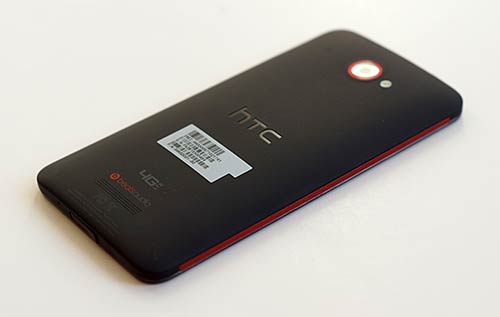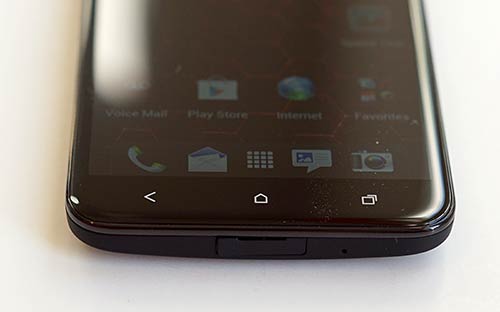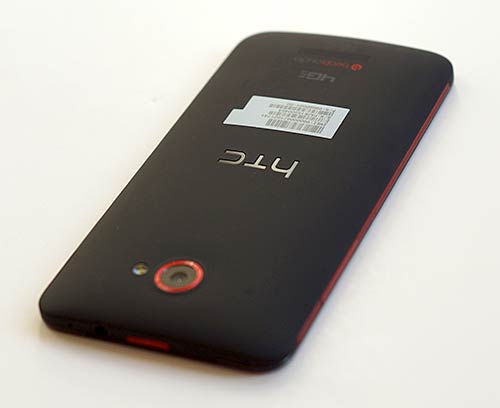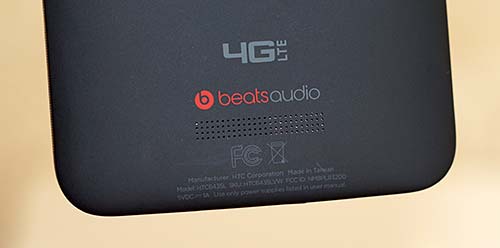Voice and Data
Call quality is excellent for incoming calls with full audio and good volume, but we found outgoing volume to be average with some occasional digitization of voice. It’s nothing to worry about, but the DNA doesn’t stand out above the crowd of solid smartphones on the market for outgoing voice quality.
Data speeds on Verizon’s LTE 4G network are par for the course, which is to say very good, though Verizon trails AT&T for LTE speeds at the moment in our area. The HTC Droid DNA manages the same speeds as the Motorola Droid RAZR MAXX HD and Galaxy S III according to the Speedtest.net app (13Mbps down and 5.7Mbps up).
This is a world phone that also works on GSM and HSPA+ networks for you world travelers. Our review unit actually worked with an AT&T SIM card (Verizon usually turns off compatibility with US GSM carriers). This may be because we have a pre-release phone, so no promises it will work for you. We suspect it’s a pre-release issue because after using an AT&T SIM card and enjoying HSPA+ data on AT&T’s network, we had to hard reset the phone (wipe it out and start fresh) to get it to register on Verizon’s network again.
Display and Sound
This is undeniably one of the best mobile displays on the planet. At a mind-boggling 440 ppi, you won’t find anything sharper than this, not even the 264ppi iPad with Retina Display. The full 1080p means you can watch full HD movies without scaling—on a phone. Wow. The fused glass on the Super LCD3 display makes images look painted on, much like the HTC One X and iPhone 5. Viewing angles are very wide and colors are rich and more natural than on Super AMOLED displays. The display’s sides have a subtle curve (again like the One X and also like the Nokia Lumia 920) and it looks cool. We haven’t had any problems with dust getting stuck in the crevices where the glass meets the phone’s body. The display has good brightness, but it’s not particularly gifted at fighting bright sunlight (the Nokia Lumia 920 and iPhone 4S and iPhone 5 get that honor). Glare and reflections are relatively well controlled on the gloss Gorilla Glass 2 display.
The Droid DNA has a 2.5v audio pre-amp and Beats audio, but that magic shines through headphones rather than the rear speaker. That’s not to say the speaker isn’t fairly loud and full for a phone, but it doesn’t raise the bar either. Sound through the headset jack is top notch with a decent set of headphones: audio is not only crazy loud (be nice to your ears and avoid max volume), but it’s rich and full. This isn’t the mindlessly heavy Beats audio of old, but something more balanced and pleasing for a wide variety of music. Yes, bass is still more than ample, but the clarity of trebles and the faint whispers of background tracks like a brush on cymbals suddenly become clear and present.
Camera
HTC puts excellent cameras into their high end smartphones, and their Android camera app is top notch for offering myriad shooting options, including HDR and the ability to capture photos while simultaneously shooting video. The rear camera can shoot 1080p video at 30fps, though in low light the frame rate may drop. The rear camera has a BSI sensor and a fast f/2.0 lens to further improve low light photography. Indeed, the 8 megapixel camera with LED flash can take some compelling night shots of street scenes and moody bars, though we noted more noise than with the supremely impressive Lumia 920. That said, the DNA’s night sky blacks look black rather than noisy gray, and that makes for a very striking evening capture.
Benchmarks
Battery Life
As with other recent HTC unibody phones, the battery is sealed inside, so you can’t swap in a spare as needed on the road. As a consolation, the 2020 mAh Lithium Ion Polymer battery has good stamina despite the big high res display and 4G LTE. Chalk that up to excellent power management and the Qualcomm S4 Pro’s power frugalness. Like most powerful, big screen smartphones, you’ll likely have to charge the phone nightly with moderate use (some calling, web, push email, music and 30 minutes of video playback), but we routinely ran the phone from 8am to 10pm without running out of power.
Conclusion
After two weeks using the HTC Droid DNA, I can safely say it’s one of my top smartphone picks for 2012 and early 2013. This is not only a fast phone with the latest quad core Qualcomm S4 CPU, but it has a class-leading 1080p display that’s a feast for the eyes. At 5”, you might think this is an unwieldy phone, but it’s much more hand-friendly than the Samsung Galaxy Note II, and not that much bigger than 4.7 and 4.8” Android smartphones like the HTC One X+ and Samsung Galaxy SIII. The design is elegant, the build quality is excellent and it’s a pleasure to hold and use. As long as you can live with the 16 gigs of storage, I highly recommend the DNA.
Price: $199 with 2 year contract, $599 without contract.
Websites: www.htc.com/us/, www.verizonwireless.com |




|

